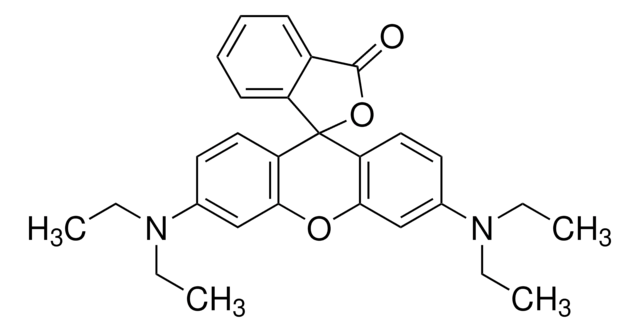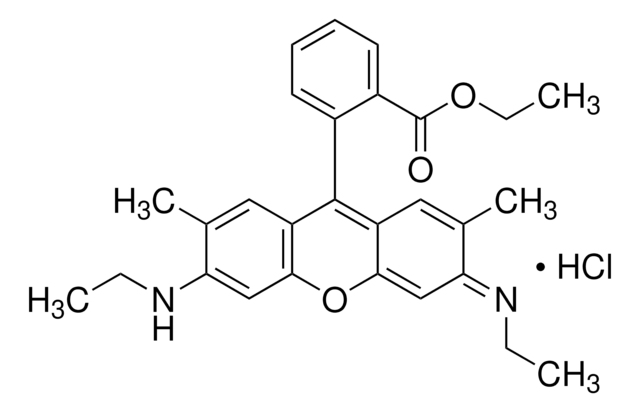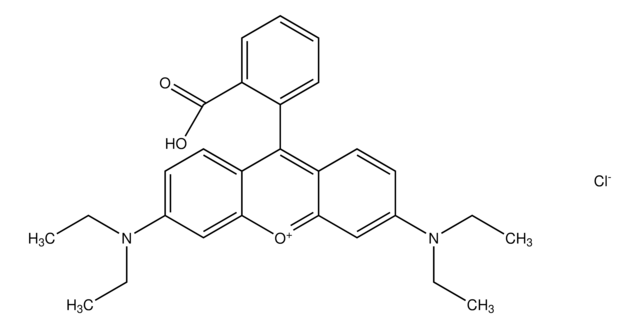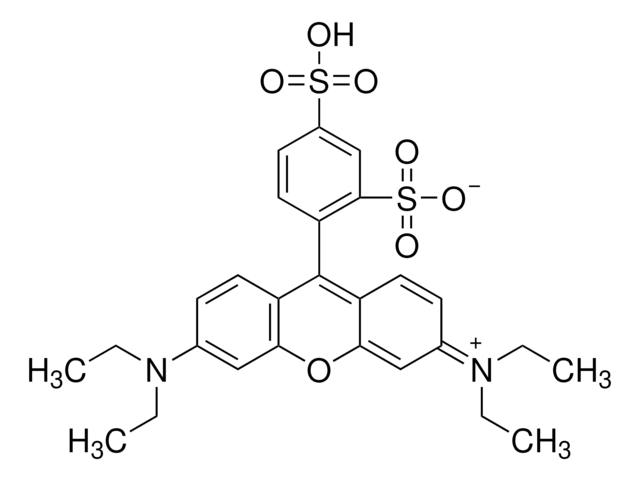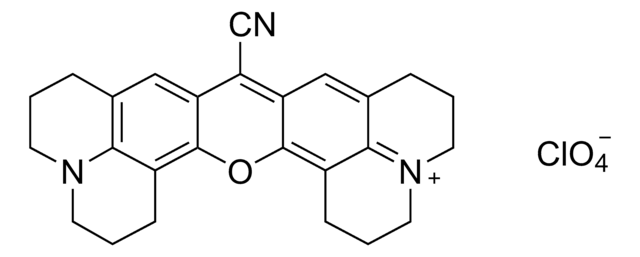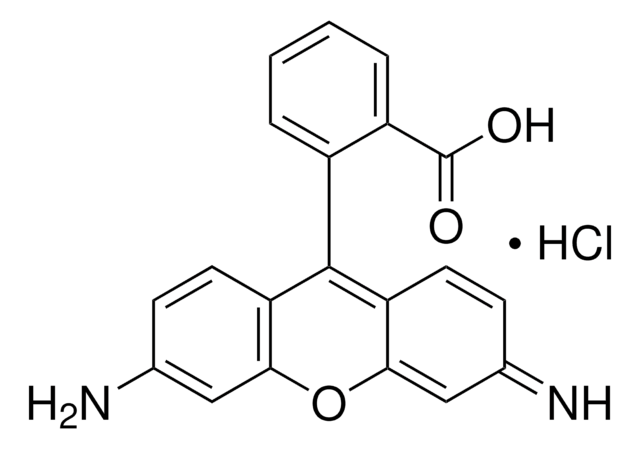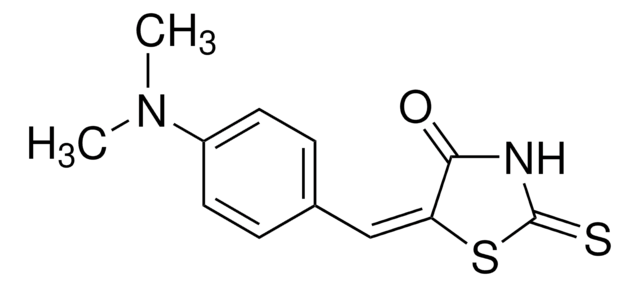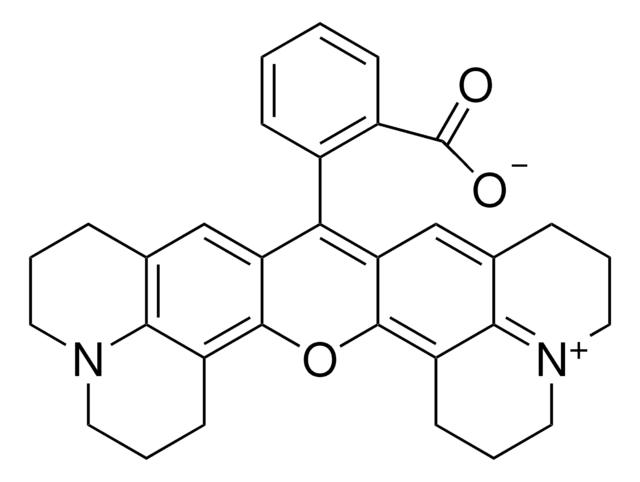Kluczowe dokumenty
02558
Rhodamine B solution
0.2% in isopropanol, for TLC derivatization
About This Item
Polecane produkty
klasa czystości
for TLC derivatization
Poziom jakości
stężenie
0.2% in isopropanol
metody
thin layer chromatography (TLC): suitable
gęstość
0.79 g/mL at 20 °C
ciąg SMILES
[Cl-].CCN(CC)c1ccc2c(OC3=CC(\C=CC3=C2c4ccccc4C(O)=O)=[N+](\CC)CC)c1
InChI
1S/C28H30N2O3.ClH/c1-5-29(6-2)19-13-15-23-25(17-19)33-26-18-20(30(7-3)8-4)14-16-24(26)27(23)21-11-9-10-12-22(21)28(31)32;/h9-18H,5-8H2,1-4H3;1H
Klucz InChI
PYWVYCXTNDRMGF-UHFFFAOYSA-N
Zastosowanie
Hasło ostrzegawcze
Danger
Zwroty wskazujące rodzaj zagrożenia
Zwroty wskazujące środki ostrożności
Klasyfikacja zagrożeń
Eye Irrit. 2 - Flam. Liq. 2 - STOT SE 3
Organy docelowe
Central nervous system
Kod klasy składowania
3 - Flammable liquids
Klasa zagrożenia wodnego (WGK)
WGK 2
Temperatura zapłonu (°F)
53.6 °F - closed cup
Temperatura zapłonu (°C)
12 °C - closed cup
Środki ochrony indywidualnej
Eyeshields, Faceshields, Gloves, type ABEK (EN14387) respirator filter
Wybierz jedną z najnowszych wersji:
Masz już ten produkt?
Dokumenty związane z niedawno zakupionymi produktami zostały zamieszczone w Bibliotece dokumentów.
Klienci oglądali również te produkty
Nasz zespół naukowców ma doświadczenie we wszystkich obszarach badań, w tym w naukach przyrodniczych, materiałoznawstwie, syntezie chemicznej, chromatografii, analityce i wielu innych dziedzinach.
Skontaktuj się z zespołem ds. pomocy technicznej
